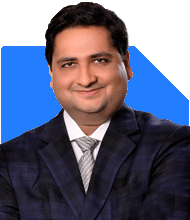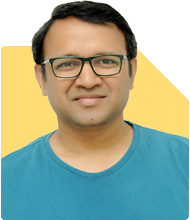Hardik Parikh | Answer |Ask -Follow
Tax, Mutual Fund Expert - Answered on Apr 11, 2023
He also holds an MBA degree from IIM-Indore.
Hardik, who began his career as an equity research analyst, founded his own advisory firm, Hardik Parikh Associates LLP, which provides a variety of financial services to clients.
He is committed to sharing his knowledge and helping others learn more about finance. He also speaks about valuation at different forums, such as study groups of the Western India Regional Council of Chartered Accountants.... more

Hi..i am 48..i want to invest 50 lacs in total out of which I want Rs.25000 as fixed monthly income and remaining amount I wish to invest for 5 years+.. please suggest.regards
Thank you for reaching out for financial advice. Based on your requirements, I suggest the following investment strategy to achieve a fixed monthly income of Rs. 25,000 and invest the remaining amount for 5 years or more.
Fixed monthly income:
To achieve a fixed monthly income of Rs. 25,000, you can consider investing in a combination of fixed deposits, post office monthly income schemes, or debt mutual funds with a dividend payout option.
For instance, if you invest Rs. 30 lakhs in a fixed deposit or a post office monthly income scheme with an annual interest rate of around 6%, you can generate a monthly income of approximately Rs. 25,000. However, please note that the interest rates might vary depending on the bank, post office, or financial institution you choose. Do consider taxes and inflation while making these investments.
Investment for 5 years+:
For the remaining Rs. 20 lakhs, you can consider a mix of equity and debt mutual funds. A balanced or hybrid mutual fund, which invests in both equity and debt securities, can be a good option for a 5-year investment horizon. This diversified approach can help in achieving moderate returns with lower risk exposure.
You can also explore other investment options such as National Pension System (NPS) or tax-saving fixed deposits if you're looking to save for your retirement or avail tax benefits.
Please note that this is general advice, and I would recommend consulting with a certified financial planner or advisor for a personalized investment plan based on your risk tolerance, financial goals, and specific circumstances.
I hope this helps you in achieving your financial objectives.
You may like to see similar questions and answers below
Ramalingam Kalirajan |10894 Answers |Ask -Follow
Mutual Funds, Financial Planning Expert - Answered on Apr 05, 2023
Hardik Parikh | Answer |Ask -Follow
Tax, Mutual Fund Expert - Answered on May 04, 2023
Sunil Lala | Answer |Ask -Follow
Financial Planner - Answered on Feb 11, 2024
Ramalingam Kalirajan |10894 Answers |Ask -Follow
Mutual Funds, Financial Planning Expert - Answered on May 08, 2024
Ramalingam Kalirajan |10894 Answers |Ask -Follow
Mutual Funds, Financial Planning Expert - Answered on May 26, 2024
Radheshyam Zanwar |6747 Answers |Ask -Follow
MHT-CET, IIT-JEE, NEET-UG Expert - Answered on Dec 16, 2025
Shalini Singh |181 Answers |Ask -Follow
Dating Coach - Answered on Dec 16, 2025
Patrick Dsouza |1429 Answers |Ask -Follow
CAT, XAT, CMAT, CET Expert - Answered on Dec 16, 2025
Nayagam P P |10858 Answers |Ask -Follow
Career Counsellor - Answered on Dec 16, 2025
Nayagam P P |10858 Answers |Ask -Follow
Career Counsellor - Answered on Dec 16, 2025
Samraat Jadhav |2510 Answers |Ask -Follow
Stock Market Expert - Answered on Dec 16, 2025
Samraat Jadhav |2510 Answers |Ask -Follow
Stock Market Expert - Answered on Dec 16, 2025
Nayagam P P |10858 Answers |Ask -Follow
Career Counsellor - Answered on Dec 16, 2025
Nayagam P P |10858 Answers |Ask -Follow
Career Counsellor - Answered on Dec 16, 2025
Ramalingam Kalirajan |10894 Answers |Ask -Follow
Mutual Funds, Financial Planning Expert - Answered on Dec 16, 2025



























